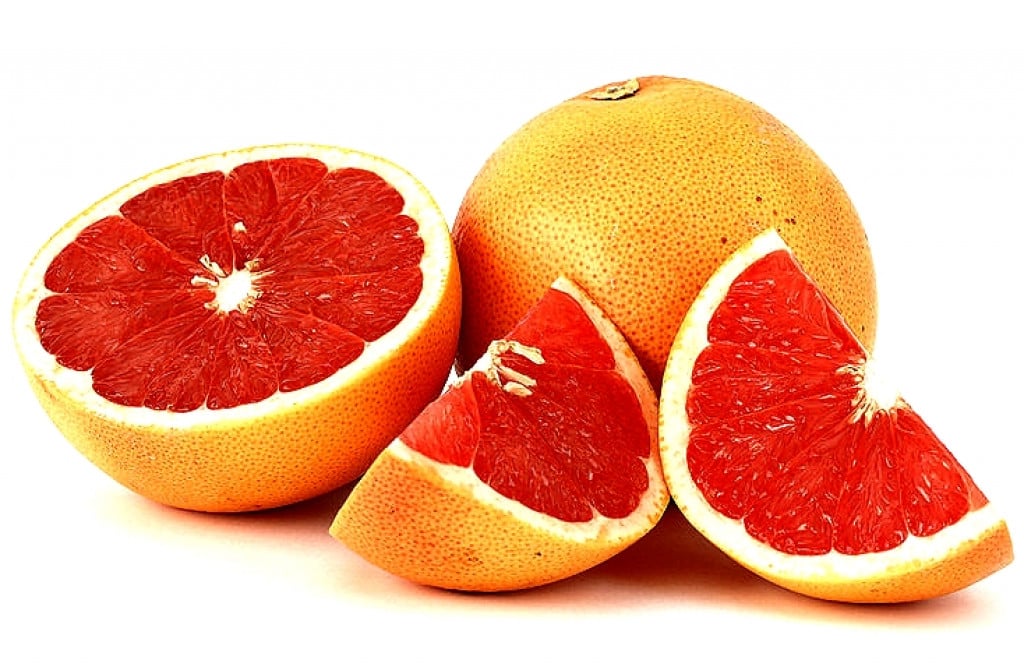

Its improved attributes of mutant variety are fruit and juice color, deeper red, and wide adaptation. The 'Rio Red' is a mutation-bred variety that was developed by treatment of bud sticks with thermal neutrons.

The 'Rio Red' variety is a 2007 Texas grapefruit with registered trademarks Rio Star and Ruby-Sweet, also sometimes promoted as Reddest and Texas Choice. Using radiation to trigger mutations, new varieties were developed to retain the red tones that typically faded to pink. The Texas Legislature designated this grapefruit variety the official "State Fruit of Texas" in 1993. The 'Thompson' was a limb sport from a 'Marsh' grapefruit selected in 1913. It was a limb sport of a 'Thompson' grapefruit selected by A.E. The 1929 'Ruby Red' (or 'Redblush') patent was associated with real commercial success, which came after the discovery of a red grapefruit growing on a pink variety. The name grape-fruit was used more and more during the 19th century to refer to pomelos, to the consternation of some. Later, Kim (1990) found a different citrus called forbidden fruit or shaddette in Saint Lucia that is closely related to grapefruits and may be the plant described by Hughes and Macfadyen. (1987) suggest that Hughes's golden orange was actually a grapefruit while his forbidden fruit was a different plant that had since became extinct and frequently confused with grapefruits. Macfadyen distinguished between the two plants by fruit shape with the Barbadoes Grape Fruit being piriform while the forbidden fruit was "maliformis." Macfadyen's and Hughes's description differ, so it is not clear that the two reports are describing the same plant. Macfadyen identified two varieties – one called forbidden fruit, the other called Barbadoes Grape Fruit. In 1830, the Jamaican version of the plant was given the botanical name Citrus paradisi by botanist James Macfadyen. After this, authors of the period used both terms forbidden fruit and grapefruit as synonyms. An alternative explanation offered by Tussac (1824) is that this name may allude to clusters of the fruit on the tree, which often appear similar to bunches of grapes. Lunan reported that the name was due to its similarity in taste to the grape ( Vitis vinifera). In 1814, naturalist John Lunan published the term grapefruit to describe a similar Jamaican citrus plant. However, Hughes's forbidden fruit may have been a plant distinct from grapefruit although still closely related to it. Griffith Hughes, who described specimens from Barbados in The Natural History of Barbados. Description from Hughes' 1750 Natural History of BarbadosĪ hybrid fruit, called forbidden fruit, was first documented in 1750 (along with 14 other citrus fruits including the guiney orange) by a Welshman, Rev. Well as the best Orange, in its delicious Taste and Flavour. It hath somewhat of the Taste of a Shaddock but far exceeds that, as Tree in this or any of our neighbouring Islands. Orange and exceeds, in the Delicacy of its Taste, the Fruit of every

The Fruit, when ripe, is something longer and larger than the largest The Trunk, Leaves, and Flowers of this Tree, very much resemble The grapefruit then probably originated as a naturally occurring hybrid between the two plants some time after they had been introduced there. This apparently referred to a captain who traded in the West Indies in the 17th century. One story of the fruit's origin is that a certain "Captain Shaddock" brought pomelo seeds to Jamaica and bred the first fruit, which were then called shaddocks. maxima were present in the West Indies by 1692. One ancestor of the grapefruit was the Jamaican sweet orange ( Citrus sinensis), itself an ancient hybrid of Asian origin the other was the Indonesian pomelo ( C. Grapefruit originated as a natural hybrid. 'Ruby Red' (of the 'Redblush' variety) was the first grapefruit patent. Its flesh is segmented and acidic, varying in color depending on the cultivars, which include white, pink, and red pulps of varying sweetness (generally, the redder varieties are the sweetest). The fruit is yellow-orange skinned and generally an oblate spheroid in shape it ranges in diameter from 10 to 15 cm (3.9 to 5.9 in). They produce 5 cm (2 in) white four-petaled flowers. The leaves are long (up to 15 cm (5.9 in)), thin, glossy, and dark green. The evergreen grapefruit trees usually grow to around 5–6 m (16–20 ft) tall, although they may reach 13–15 m (43–49 ft). Grapefruit growing in the grape-like clusters from which their name may derive


 0 kommentar(er)
0 kommentar(er)
